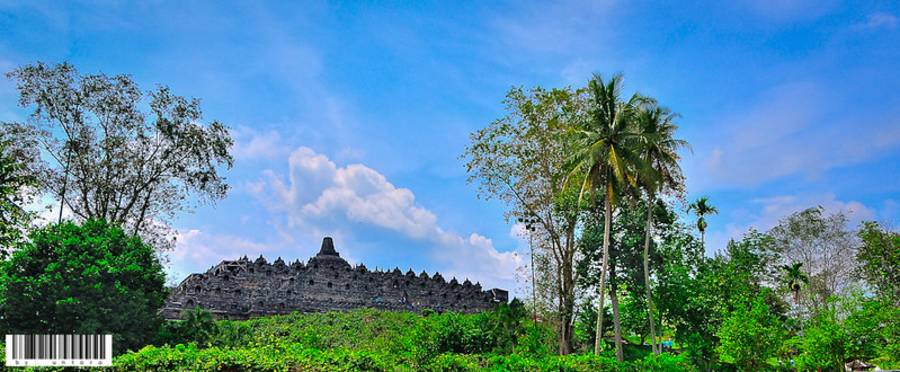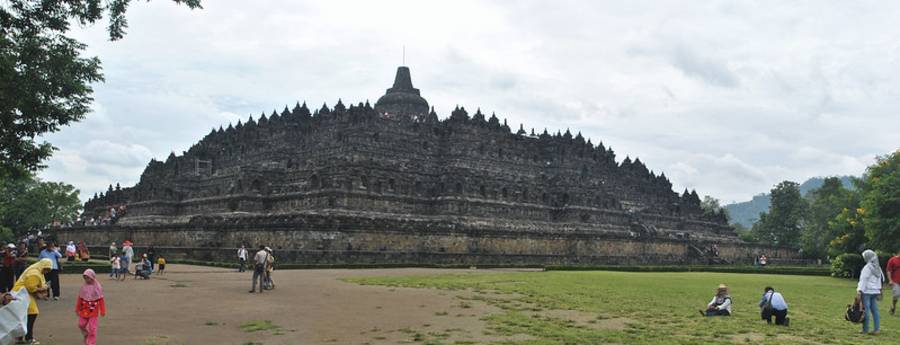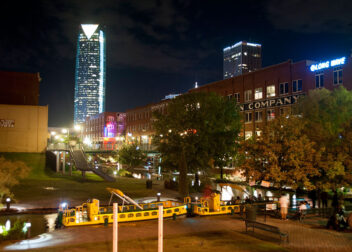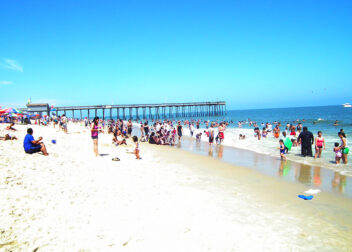Candi Borobudur: Standing Tall Against All Odds
Candi Borobudur: Borobudur is a Buddhist stupa and temple complex located in Central Java—40 km northwest of Yogyakarta. Listed as one of the largest and most famous Buddhist temples in the world, it is definitely a must-see attraction in Java and perhaps, the most culturally important site in all of Indonesia.
History and Rediscovery
More than being an architectural wonder, Borobudur’s complex history, and resilience are what truly make it extraordinary. Well for starters, it is located in a predominantly Islamic country with a Buddhist population of just 1%. A temple with such magnitude was built for the least dominant religious group? Why?
It was during the peak of maritime trade between India and Indonesia that Buddhism was introduced in Java. Buddhism was widely accepted then, especially since the most notable promoters were the Sailendra dynasty, the ruling empire of Java during the 7th century. The Sailendras were ardent advocates of Mahayana Buddhism. They covered the Kedu Plains of Java with Buddhist monuments and the most remarkable of which, is the Borobudur temple.
Built over a period of 75 years during the 9th century, Borobodur is built out of roughly 2 million blocks of stone in the form of an enormous mandala. Upon its construction, it has become an iconic landmark that draws pilgrims from all over the world.
It is rather hard to believe that for several centuries Borobudur was abandoned–buried in volcanic ash and thick jungle growth. It is still a mystery why it happened, but popular theories point to the numerous volcanic eruptions that killed the lush vegetation in the area and drove people away. Moreover, the mass conversion of the population to Islam during the 15th century diminished Borobudur’s cultural value to its people.
It was in 1814 when Thomas Raffles—founder of Singapore—learned of Borobudur’s existence. He presided over the rediscovery of Borobudur and Prambanan temples during his brief rule as the British Governor. The entire complex was unearthed in 1885. However, it took a while for appreciation and protection to develop. There were even proposals of completely dismantling the temple and distribute its relics to museums all over the world. As we know now, it didn’t happen. It remains intact and still continues to amaze people up to this day.
Modern Day Borobudur

Since the restoration projects, the Borobudur Temple has grown in popularity. Today it is one of the most visited tourist sites in Asia, and in 1991, it was officially acknowledged as a World Heritage Site by UNESCO.
There are however a few downsides to its rising popularity. Due to the influx of visitors, vandalism and looting became rampant. It is evident by the empty stupas—devoid of statues and relics—and the conspicuous headless Buddhas. To avoid further incidents, the temple complex is now appropriately guarded.
Still, despite their best efforts to protect Borobudur, the biggest offender is downright unstoppable—mother nature herself. In 2010, the volcanic eruption of the nearby Mt. Merapi heavily damaged the historic Borobudur. The volcanic ash, like a fog, blanketed the entire complex. The acidic sediments seeped their way into the cracks and crevices of the already worn temple stones.
It took a year to restore the temple and since it reopened, the upper level of the complex has been restricted to 82 visitors. It is truly amazing how the Borobudur temple managed to survive all of those challenges. It has withstood the test of time, cultural changes, and terrifying natural calamities. And standing in front of such a mighty and historic structure is one of the most surreal and priceless moments that travelling has rewarded me.
Exploring Borobudur: Parts of the complex
The expansive Borobudur complex is built like a multi-level mandala. There are 6 square platforms and 3 circular platforms, which altogether are decorated with at least 2600 relief panels and 500 Buddha statues. The square base is 387 ft. long on each side and the highest point peaks at 114 ft. above ground level. The base of the structure though is not part of the original construction. It was built later to provide support and prevent the temple from collapsing.
The 6 square terraces make up the bulk of the structure. Each level has relief panels on both sides that recount the story of Buddha’s past lives up to his enlightenment. The correct way to start the story is to begin from the east gate which is also the main entrance. From there, you continue your walk by circulating each terrace clockwise.
The upper levels are 3 circular terraces that make Borobudur truly extraordinary. It is where the magnificent domes—we see in travel pictures and advertisements—are scattered in perfect formation. The singular tallest dome in the middle is the core of the entire complex. It is surrounded by 72 perforated stupas housing half-hidden Buddha statues.
More than just a temple, the Borobudur in essence is a very large teaching graphic about Buddha’s life. The monuments’ 3 division symbolizes the 3 realms of Buddhist Cosmology. The 6 different postures of the Buddha statues depict His different mind-states and actions. And as mentioned earlier, the wall carvings visually demonstrate the timeline of Buddha’s life. There is certainly a lot to learn by simply walking around the terraces so it is highly recommended to employ a guide for a more in-depth tour.
Getting There
The Borobudur temple is located in the Kedu Plains of Central Java. It is about an hour’s drive from Yogyakarta city and two hours if coming from Semarang. The direct albeit expensive way to get there is through a private car rental. It is a good option if you’re with a group of travelers. On the other hand, the cheapest way is to ride the public Trans-Jogja buses 2B and 2A. The fare for a one-way trip is a mere RP3600. This option caters mostly to Indonesian tourists as navigating around the city can be really challenging.
Getting there is the easiest through a join-in package tour from Yogyakarta. It is the most convenient choice for foreign tourists. The tour can last a full day and it is often packaged with Prambanan or Mt. Merpati. But like how packaged tours go, expect a few stopovers at souvenir shops and factories.
Entrance Fees and Opening Hours
The monument is open from 5 am to 6 pm daily. It is best to go early to avoid the masses. The temple is built to be climbed so try not to go during the afternoon as well, the temple is literally under the scorching sun, the heat and humidity can be unbearable.
Ticket prices
- Foreigners 25$ RP 230,000
- Students w/ ID 15$ RP 110,000
- Indonesians RP 30,000
Tour guides typically cost RP 75,000 – 100,000 per hour.
Half-day and Full-day packaged tours from Yogyakarta range between 50 to 100$.



